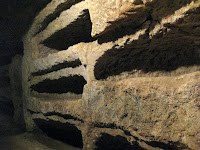In 1814, Napoleon Bonaparte was banished to the island of Elba. He took with him his mother, his sister and an army of 600 men. He kept his title of Emperor, but his kingdom was confined to this 224-square-kilometer mountainous island, 20 kilometers off the Italian mainland. Surrounded by a sparkling sea and wild natural beauty, Napoleon set up household in the Villa di San Martino, using another villa, the Palazzina dei Mulini for official functions. He declared himself content with his new role in life and set about building roads and making social improvements. Three hundred days after he arrived, however, Napoleon escaped from his island confinement and returned to France to take up once again the reins of power.
Part of the Tuscan Archipelago, Elba is one of a chain of seven jewel-like islands just off the coast of Tuscany where the Ligurian Sea meets the Tyrrhenian Sea. According to local mythology, the islands were formed from pearls that fell from the necklace of Venus as she arose from the foam of the sea. I don't believe the pearl necklace theory. It's obvious to me that given the incredible diversity of the islands, the necklace must have been made up of seven different gems. (For a more scientific explanation, including several links in Italian, click here.)
The seven islands are Elba, Gorgona, Capraia, Giglio, Giannutri, Pianosa and Montecristo, the last made famous by Alexandre Dumas in his novel, The Count of Monte Cristo.
On a recent weekend, we signed up with a few friends for a two-day trip to Elba and Pianosa, organized by CAI, the Alpine Club of Italy. At 6:20 a.m, we met up at the Pisa station with a genial group of about 30 hikers. With everything organized in advance by our very capable capogita, we took a train, a van and two boats and arrived on the island of Pianosa at 10:30 a.m.
As its name implies, Pianosa is flat. Its highest point is 29 meters, but it is not without interest. First inhabited in the Upper Paleolithic era, the island, known then as Planasia, was an important grain producing area for the Romans and has the remains of extensive Roman catacombs. Like Elba, Pianosa also had a famous prisoner - Agrippa Postumas, who was exiled there by his grandfather the Emperor Augustus in 9 AD.
Successively populated and abandoned over the centuries, Pianosa became known in modern times as the home of a self-sustaining agricultural penal colony established there in 1858 by the Grand Duke of Tuscany. Prisoners lived and worked on small farms and produced and sold all the products needed on Pianosa, including wine, bread and pecorino cheese. A photo exhibit on the island presents a portrait of a tranquil, bucolic existence for guards and prisoners alike. In the 1970s, however, the serenity on the island ended when the State established a maximum security prison there. Pianosa became home to Italy's most dangerous criminals, including mafia chiefs and convicted terrorists of the Red Brigades.
The prison was closed in 1998 and Pianosa, along with the other six islands, became part of the National Park of the Tuscan Archipelago, which maintains a small staff on the island. Nature has taken over the fields and farms of the prisoners and the maximum security buildings have fallen into disrepair.
Our tour included a two-hour walk along a coastline dotted with picturesque coves and inlets - a veritable beach-lovers dream. After a picnic lunch by the sea, we visited the catacombs and the town. With its beautiful abandoned port and empty buildings, Pianosa has a mysterious and melancholic feel, even in the bright Mediterranean sunshine. Just before five, we rushed to catch the only boat to Elba, lest we become Pianosa's latest prisoners.
On Sunday we made up for our leisurely stroll around Pianosa with a strenuous climb to the second highest peak on Elba, Monte Calanche. It was pretty much 900 meters straight up and then a final push to the top made with the aide of cords attached to the rock face. "Divertente," as our guide said. It was, indeed, fun and the effort required to get to the top made the splendid view from above all the more beautiful and our prosciutto panini all the more tasty. After that, it was all downhill - long and fast.
On the ferry back to the mainland with following gulls and a setting sun, I sat and reflected on the two grand truths of the weekend:
1) Without freedom, even a paradise such as Elba can become an inferno, and;
2) It's amazing how far you can get on a mountain (and in life) if you just put one foot in front of the other.
To see more photos, click here.

Ciao,
Geraldine
Photos by Geraldine Calisti Kaylor






I vote for Paradise! Marvelous adventures. I get to see the world from our desk top via your blog. The climb looked spectacular. Your travels make me want to visit Italy now. Thanks so much for sharing!
ReplyDeleteBeautiful, Geraldine. You go to wonderful locales--I've never been to Elba, and now I feel as if I have. It looks amazing. Yes; thanks for sharing!
ReplyDeleteSince I don't travel any more .... now I have your oysters ... we have to find a way to make money with them .... it's fun ... and you can take us to all the **** restaurants in the Marais. A.D.
ReplyDeleteThis comment has been removed by the author.
ReplyDeleteAnother fascinating and fun report.
ReplyDeleteExcellent!